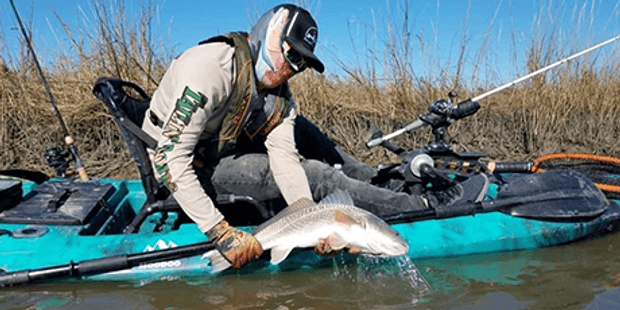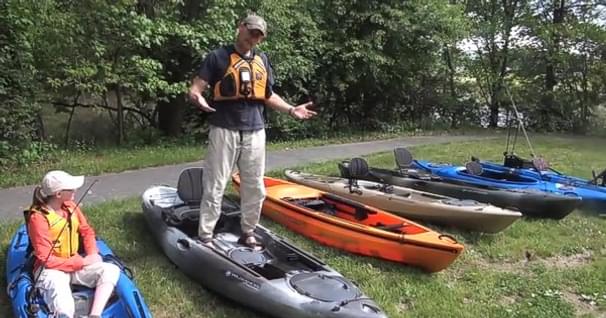Tips for Choosing A Fishing Kayak
Fishing kayaks come in all different shapes and sizes and it's important that you choose the right one. Because not only will it let you get the most enjoyment out of your time on the water, it'll make you safer on the water.
When choosing a fishing kayak, narrowing down your options is actually pretty easy, and it starts with identifying how and where you'll be using it:
• Will you be fishing small sheltered bodies of water like ponds and small lakes?
• Or will you be taking the kayak on big bodies of water that are exposed to wind and waves?
• What's the water temperature going to be like?
• And when it comes to performance, is it more important to have a kayak that's fast and responsive?
• Or are you more concerned about having a kayak that is stable and difficult to tip over?
With these questions in mind your first and biggest decision will be whether to get a sit-inside kayak or a sit-on-top kayak.
Sit-on-top kayaks are the most user friendly fishing kayaks. They're very stable and easy to get in and out of, and there's no feeling of confinement on them. They're also self bailing, which means the water drains through small holes called scupper holes. They go right through the bottom of the kayak. This means you can't swamp a sit-on-top kayak. Another great safety feature is that sit-on-tops are much easier than sit-insides to get back on to from the water, if for some reason you fall off. The one downside to sit-on-top kayaks is that you're almost guaranteed to get wet while paddling, while sit-inside kayaks allow you to stay dry.
~Fishing Kayaks from Hoodoo Sports~
Looking for a high quality fishing kayak at a reasonable price? Check out Hoodoo's lineup featuring the new dual-drive Impulse.
Sit-inside kayaks can be a good option for anglers who will be in cooler water, who want to stay dry while paddling, and who want a faster moving kayak. Just keep in mind that if you flip a sit-inside kayak, recovery is not necessarily a simple process because the kayak may swamp. As you're learning, try to stay in sheltered water or close to shore so you can swim in if you need to.
Once you've decided on whether to go for a sit-inside or sit-on-top kayak, you'll need to decide on a length for your fishing kayak. As a general rule, a long and narrow kayak will be faster, while a short and wide kayak will be slower but more stable. If you are only going to be fly fishing and sight casting, a short, wide, and stable boat is a great choice because standing is easy. The trade-off is that the kayak will be pretty slow and not ideal for paddling any real distance. On the flip side, if you want to cover more ground or maybe even troll offshore, you might want to choose a longer, narrower kayak that travels through the water more efficiently.
Once you decided on the style and size of kayak, there's one more key decision to make: Do you want a pedal kayak or do you want a paddle kayak? Traditionally kayaks are powered by paddles, but there are a number of companies that now offer pedal kayaks. One of the benefits of pedal kayaks is that they leave your hands free for fishing. The downside is that they're less maneuverable and heavier than other kayaks. The pedal system also works less efficiently in really shallow water. If you do decide on a pedal kayak, something to keep in mind is that it's very important you have a good paddle on board as a backup.
At this point you dramatically reduce your options, and most of your decisions will now impact the comfort of your kayak, and relate to features of convenience for the type of kayak fishing you're going to do.
Related Articles
No, I'm not speaking of jet skis, charter captains, air boats, and tourists. OK, they all can fall in to…
First, a moment of silence for the hardest working man in show business. The Godfather of soul - James…
Hi, Jeff Little here. I'm the regional Pro Staff director for the Wilderness Systems Fishing Team. I'm…
If you're trying to decide on a kayak, there's two questions that you have to ask yourself: HOW and…



